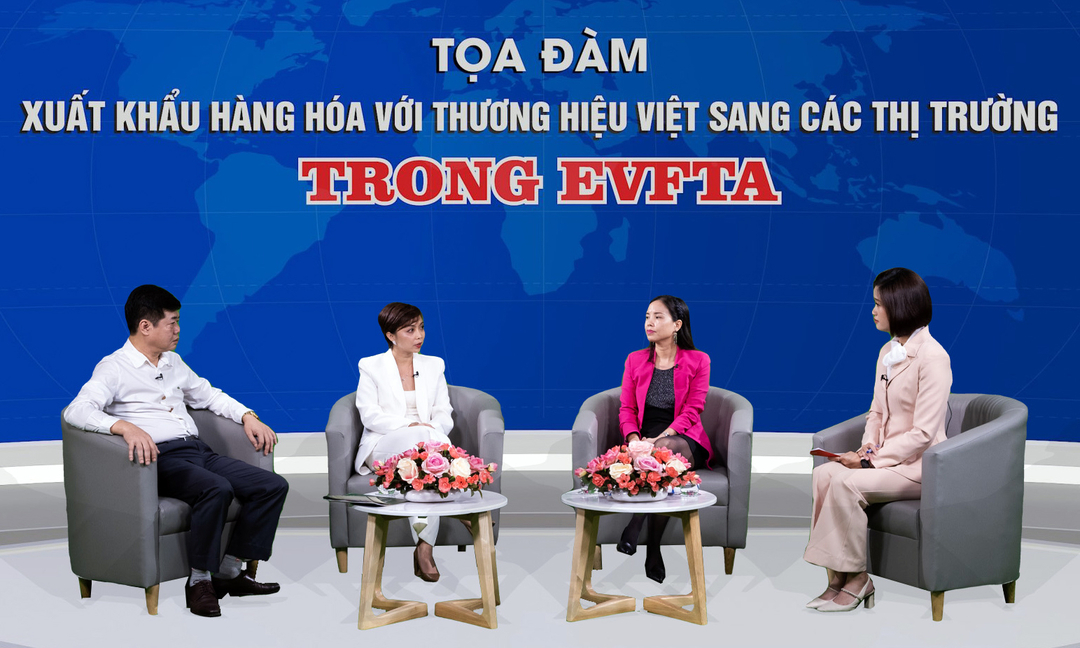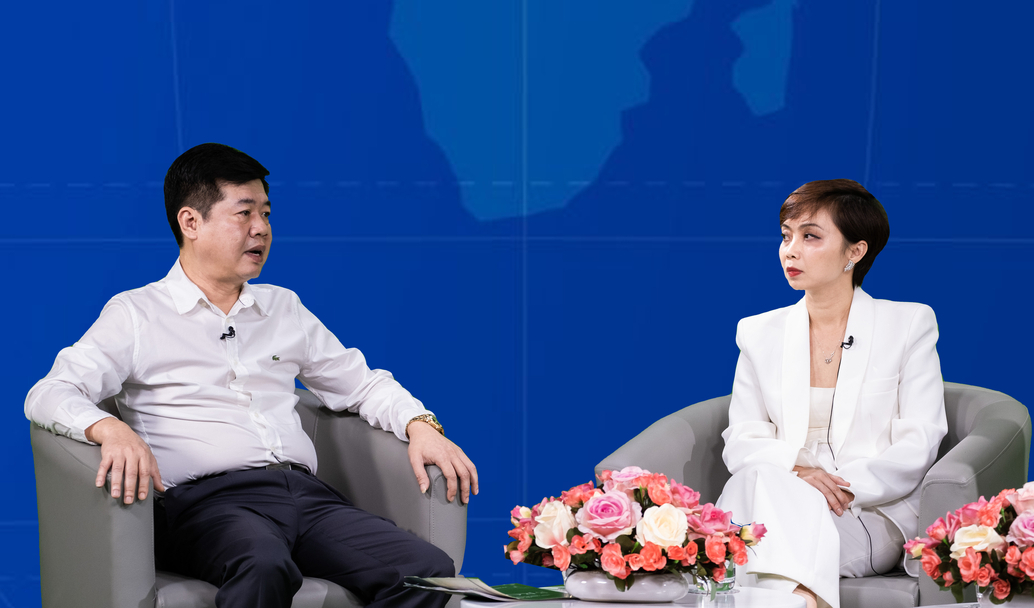
Overview of the seminar on exporting Vietnamese branded goods to markets in EVFTA.
After EVFTA entered into force more than two years, the Department of Industry and Trade found that many companies have used this “highway” to increase cooperation and export value to the EU market. The structure of exports to the EU tends to widen and diversify. However, goods exported to the EU with Vietnamese brands are still quite modest, but with foreign brands.
At a seminar organized by Industry and Trade Magazine on November 25, Ms. Nguyen Thi Thu Thuy, Deputy Director of Export Support Center, Trade Promotion Department, commented that when the product has a brand name in the EU market, companies not only develop sustainably in Europe, but also have the opportunity to spread their brands and products to many other markets.
“In addition to market consultation sessions, the Trade Facilitation Agency is also prioritizing activities to raise awareness of companies on building, developing and protecting brands in the EU market,” Ms Thuy said.
In about two years of being affected by Covid-19, the trade promotion department also promoted online trading links with EVFTA markets. Ms. Thuy believes that by building trust with EU importers and consumers and raising branding standards, companies can achieve sustainable competitiveness in the old continent.
Along with Singapore, Vietnam are two Southeast Asian countries that have signed free trade agreements with Europe. “This is an advantage that Vietnamese companies, products and brands must take full advantage of,” said Deputy Director Thuy.

Ms. Nguyen Thi Thu Thuy, Deputy Director of Export Support Center, Trade Promotion Department spoke.
Mr. Vu Anh Son, in charge of Vietnam Trade Office in France, explained information on specific markets and revealed that the EVFTA has caused a stir in France alongside tariff benefits. Importers and international partners are more interested in the Vietnamese market.
“By the government’s commitment alone, attending the EVFTA is a huge event that draws the attention of a large number of people,” Mr Son said.
The EVFTA came into force on August 1, 2020, when Covid-19 broke out in Europe, including France. However, in the first 8 months of 2021, Vietnam has recovered almost 100% compared to before the outbreak of the pandemic (2019). In the first eight months of 2022, Vietnam exported around 4.29 billion euros to France, a 16% increase compared to 2021 and a 20% increase compared to 2020. In 2022, Vietnam is expected to reach the first Export milestone will be reached France France has a turnover of over 6 billion euros and is one of the top 20 suppliers of goods to France.
Vietnam has two main groups of export products to France with an export value of over 1 billion euros, namely shoes and telecommunications equipment, followed by textiles, machinery and equipment and electronic components, furniture, aquatic products and plastic products, plastic packaging.
In agricultural products in particular, Vietnam will only hold a modest market share in 2021. Only 1/10th of the 500 items exported to France are agricultural products, worth 276 million euros (which is about 5% of the total export value). ). Strong agricultural products are cashews, coffee, shrimp, fruit, fish fillets and rice.
“The things that seem to be Vietnam’s strengths, like agricultural produce and food, are still not many in France. Obviously we still have a lot of potential and scope to fulfill it,” said Mr. Son.

The guests shared a lot of content about branding development in the EU market.
According to Mr. Vu Anh Son, following the achieved volume growth, Vietnamese companies currently lack the initiative to build brands. As the person responsible for the Vietnam Trade Office in France, the problem lies in the enforcement capacity. He commented that few companies can access supermarket systems with complete market intelligence, supply chain development and partner linkage.
Ms Nguyen Thi Thu Thuy agreed with this view and reiterated that the number of Vietnamese brands in the EU does not match the potential. Specifically, Vietnam has protected 120 geographical indications for products, but only 39 geographical indications have been protected in the EU.
In order to use the EVFTA effectively, Ms. Thuy recommends companies to carefully study the EU market, including needs, tastes, regulations for quality standards and labels. “Products sold in the EU must conform to the culture, trends and usage needs here, but also retain the Vietnamese flavor and use this as a competitive advantage,” she advised.
For the immediate future, the Deputy Director of the Export Support Center reminded companies that they can develop trade by finding reputable people in the EU market to help spread information, or by using social networks to promote it.
Ms. Dao Thu Trang, Head of Market Development Strategy Consultancy Department, German Chamber of Commerce and Industry in Vietnam, explained that many companies export rice to Europe and pack it in 10 kg, 20 kg or even 10 kg packages, even 50 kg. For Germans or Europeans, however, rice is not a normal food. Therefore, it will be easier for them to buy small packages, like 2 kg or 5 kg.
In addition, Germany is very interested in environmental issues and social security for export goods. Therefore, Ms Trang said the government should have more human resource and job training programs to help companies have good enough people who are good enough to produce to fully meet the standards the EU wants .

